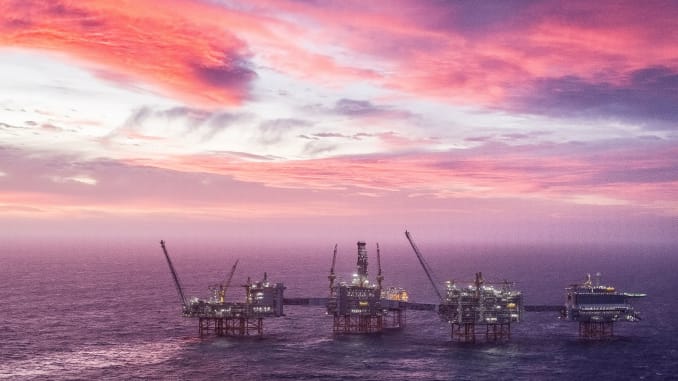The European Union has awarded 10 million euros ($11.05 million) in funding to a scheme that is aiming to install an ammonia-powered fuel cell on a ship.
The beneficiary of the money, the ShipFC project, is a consortium of 14 firms and institutions co-ordinated by NCE Maritime CleanTech.

Source: CNBC
The project will involve the modification of Eidesvik Offshore’s “Viking Energy” ship. The vessel has been used by Norwegian energy major Equinor for 17 years.
“Together with Equinor, we are now launching a full-scale research project to test a propulsion solution based on fuel cells running on pure and emission-free ammonia,” Jan Fredrik Meling, who is the CEO of Eidesvik Offshore, said Thursday.
“The goal is to install fuel cell modules with a total power of 2 MW (megawatts) on board Viking Energy in 2024,” he added. “This will make the vessel the world’s first emission-free supply vessel.”
In its own statement, Equinor explained that the vessel would take supplies to installations located on the Norwegian Continental Shelf.
Vermund Hjelland, vice president of technology and development at Eidesvik Offshore, said part of the testing would see the Viking Energy use ammonia “in transit between harbour and offshore installations for one year.”
“Our ambition is that 60 to 70 percent of the energy consumption will come from ammonia during the test period,” he said. “In addition, we want to demonstrate that the technology can supply up to 90 per cent of the total power demand.”
Cecilie Ronning, who is senior vice president for Equinor’s joint operations support, said the company was aiming to reduce emissions in its supply chain “and regards the use of ammonia as a promising solution.”
Renewable sea change
The announcement of this week’s funding comes against the backdrop of a significant shift in the shipping industry.
At the beginning of January, the International Maritime Organization (IMO) introduced new emissions regulations that it’s hoped will curb pollution generated by ships.
And in August 2019, an all-electric ferry capable of carrying roughly 30 vehicles and 200 passengers completed its maiden voyage.
The e-ferry Ellen crossed waters between the ports of Soby and Fynshav, which are located on the islands of Aero and Als in the south of Denmark.
The ship is powered by a battery system with a capacity of 4.3 megawatt hours, provided by Switzerland-headquartered energy storage firm Leclanche, and is able to sail as much as 22 nautical miles (approximately 25.3 miles) between charges.
Another example of more sustainable shipping is Finnish firm Viking Line’s M/S Viking Grace, a hybrid ship which has the capacity to use diesel, “traditional heavy fuel oil”, or liquefied natural gas.
To offset that, the vessel can also make use of a 24-meter-tall cylindrical rotor sail developed by Norsepower Oy, another Finnish company. The sail uses something called the “Magnus effect” for propulsion, according to Viking Line.
As the rotor spins, passing air will flow with a lower pressure on one side compared to the other, the business says. This difference in pressure creates a propulsion force that moves the ship forward.

